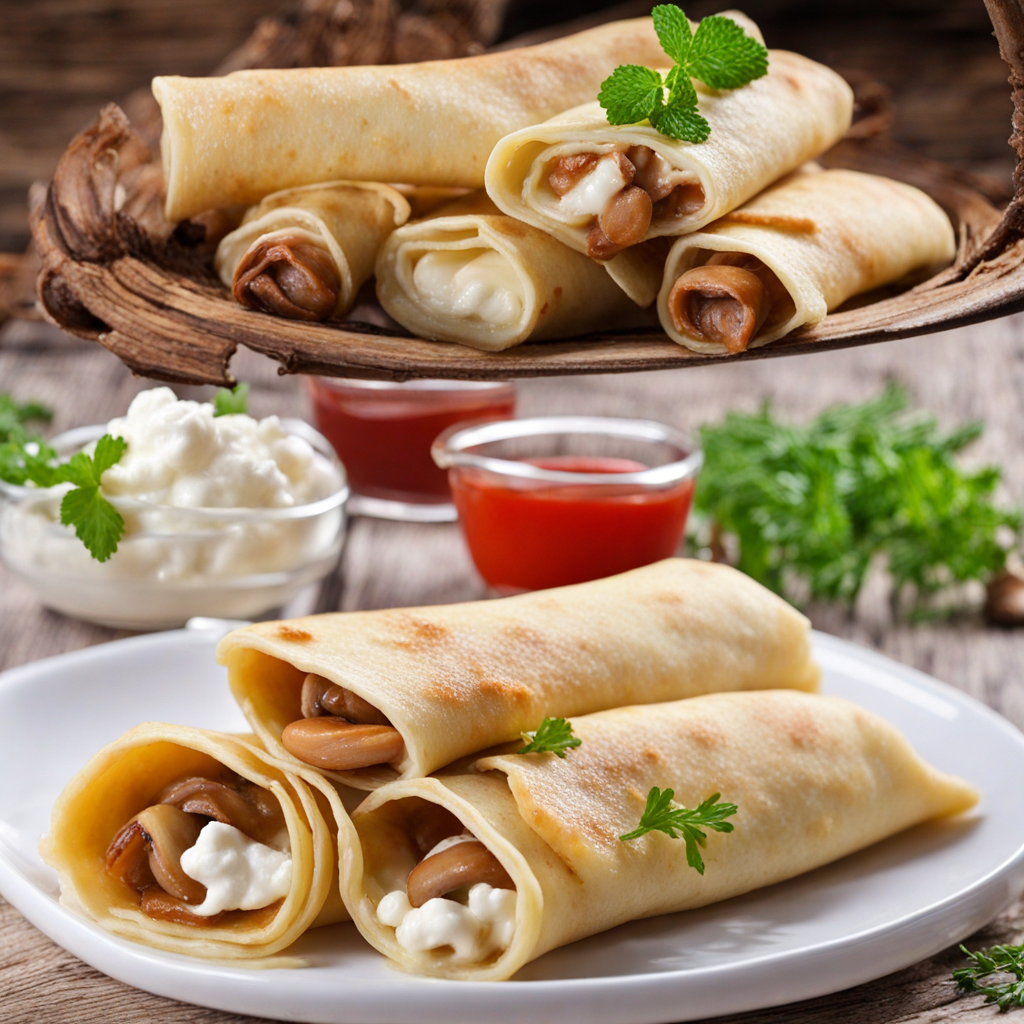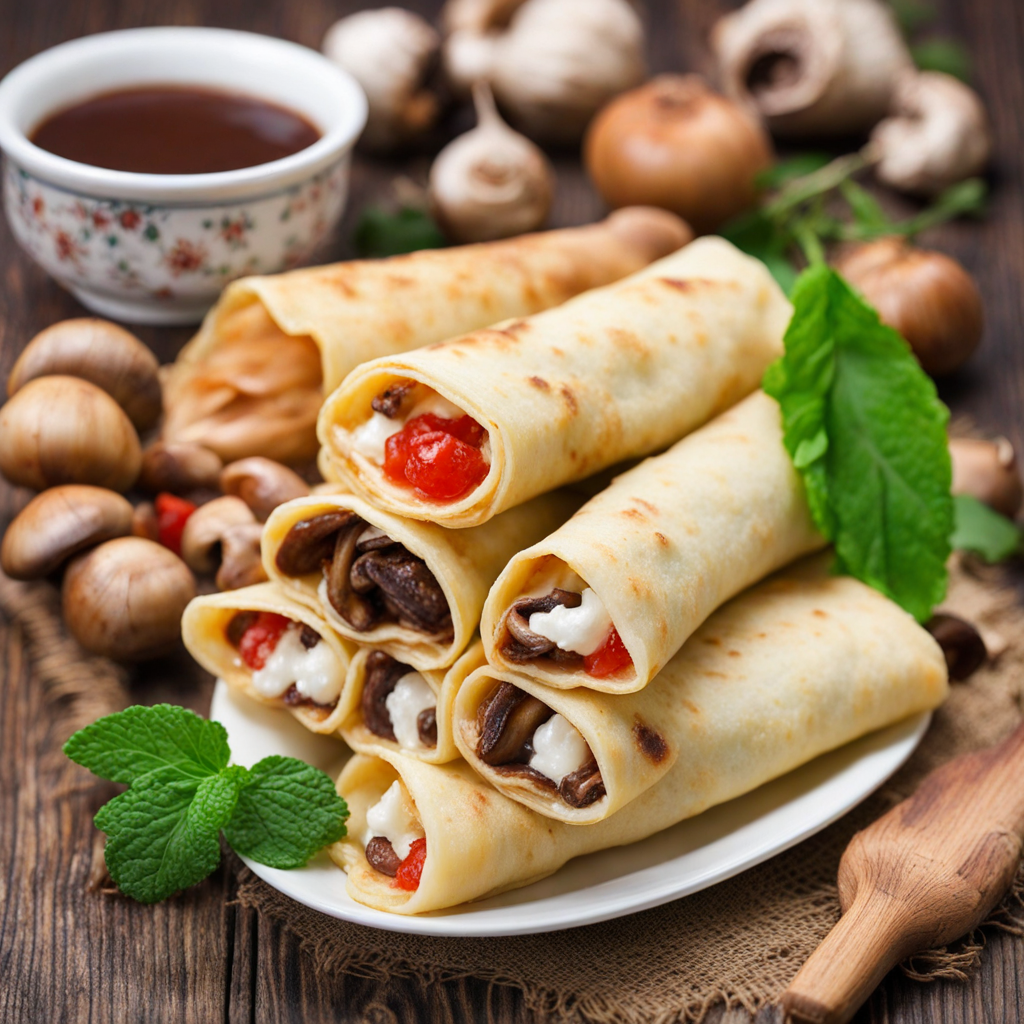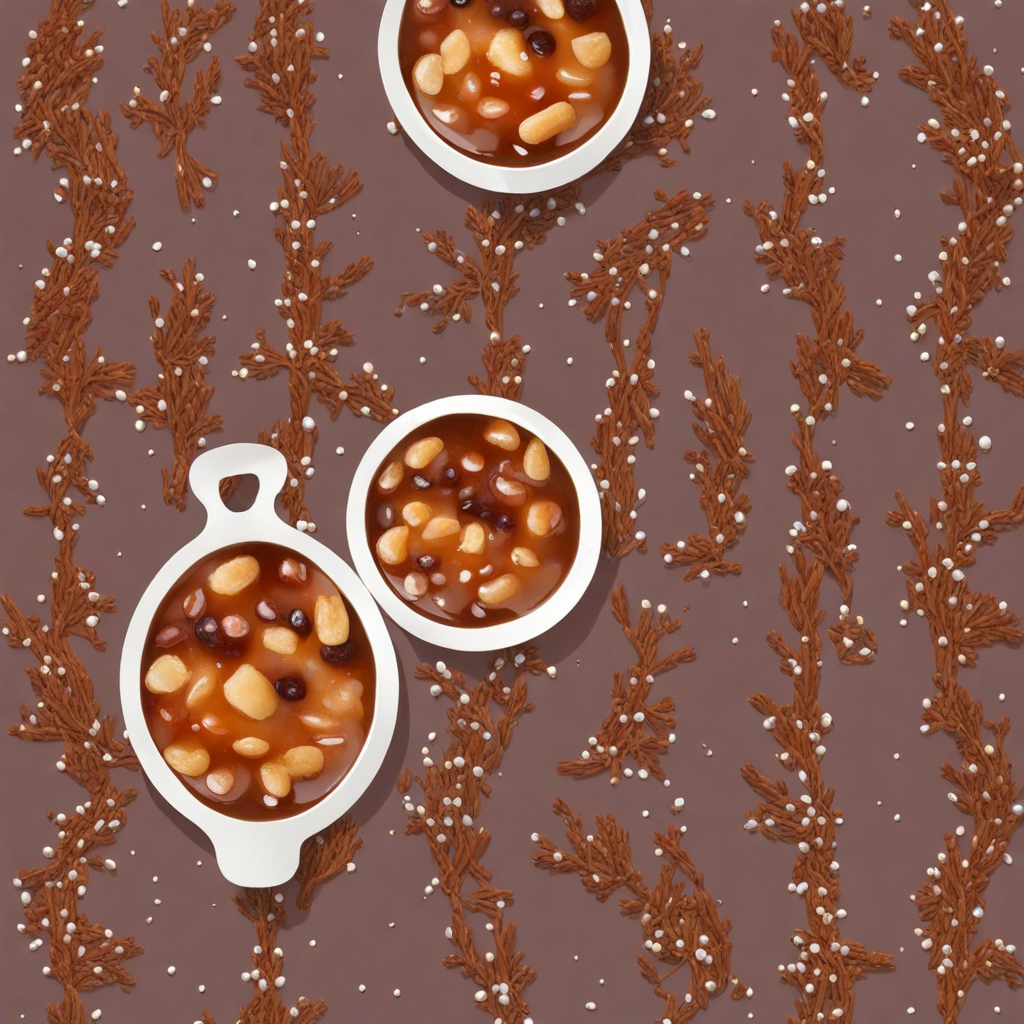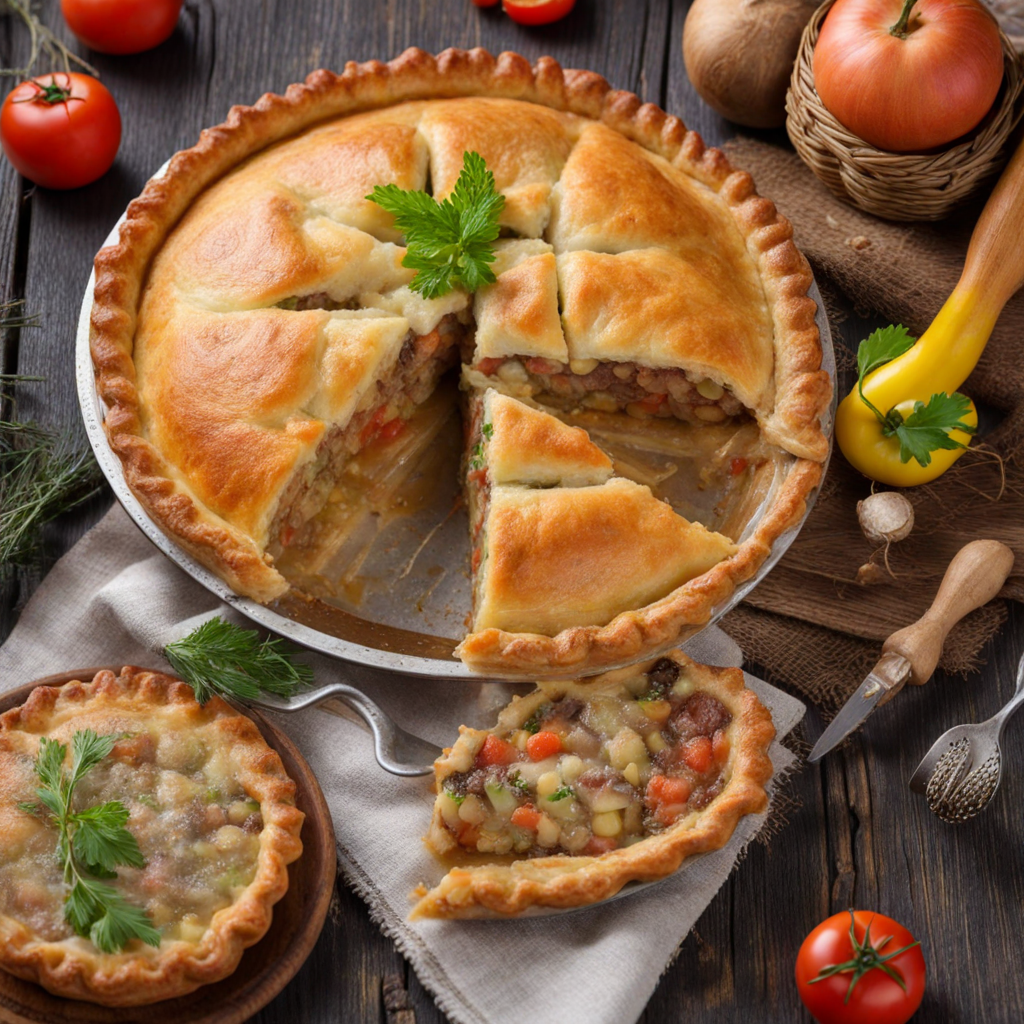Nalysnyky
Nalysnyky are a delightful Ukrainian dish that combines the comforting textures of thin pancakes with sweet or savory fillings, creating a culinary experience that is both versatile and satisfying. These delicate crepes are typically made from a simple batter of flour, eggs, and milk, which is cooked until golden brown and slightly crispy on the edges. The beauty of nalysnyky lies in their adaptability, as they can be filled with a variety of ingredients, such as farmer's cheese, sweetened cottage cheese, or fruit preserves for a dessert version, or savory fillings like mushrooms, spinach, or ground meat for a hearty meal. When prepared with sweet fillings, nalysnyky are often served with a dusting of powdered sugar, a drizzle of honey, or a dollop of sour cream, enhancing their rich flavors and making them an indulgent treat. On the other hand, savory nalysnyky might be finished with a sprinkle of fresh herbs or a side of tangy sauce, adding depth and complexity to the dish. Each bite offers a delightful contrast between the soft, pillowy pancake and the flavorful filling, creating a memorable taste experience that encapsulates the essence of Ukrainian comfort food. This dish is not only a staple in Ukrainian households but also a beloved part of festive celebrations and gatherings, showcasing the culinary heritage of the region. Whether enjoyed as a breakfast, dessert, or main course, nalysnyky invite food lovers to explore the rich flavors and traditions of Ukraine, making them a perfect choice for anyone seeking to expand their palate and discover new tastes.
How It Became This Dish
Nalysnyky: A Culinary Journey Through Ukraine's Tradition In the heart of Ukrainian cuisine lies a dish that embodies both simplicity and sophistication: nalysnyky. These delicate crepes or pancakes are filled with a variety of ingredients and have become a beloved staple across the nation. The history of nalysnyky is not just a tale of food; it is a reflection of Ukraine's cultural heritage, agricultural practices, and the evolution of culinary techniques through the ages. Origins of Nalysnyky The origins of nalysnyky can be traced back to ancient Eastern European culinary traditions, particularly within the Slavic cultures. The concept of a thin, flat bread or pancake can be found in many ancient civilizations, but the Ukrainian version, nalysnyky, stands out due to the unique fillings and cooking methods that have developed over centuries. The term "nalysnyky" is derived from the Ukrainian word "nalysnyk," which means “a rolled pancake.” The preparation of nalysnyky typically involves a batter made from flour, eggs, milk, and a pinch of salt. Once cooked, these crepes can be filled with a variety of ingredients, ranging from sweet to savory, making them a versatile dish suitable for any meal of the day. Historically, nalysnyky were associated with the agricultural cycle of Ukraine. As spring arrived and the fields bloomed, fresh ingredients became available, inspiring villagers to create dishes that highlighted the seasonality of their produce. This connection to agriculture is significant in Ukrainian culture, as food is often seen as a reflection of the land and its bounty. Cultural Significance Nalysnyky occupy a special place in Ukrainian culture, particularly in the context of family gatherings, celebrations, and religious holidays. They are often prepared for special occasions, such as weddings, Christmas, and Easter, symbolizing prosperity and abundance. During these festivities, families gather to share meals, and nalysnyky often take center stage, served alongside other traditional dishes like borscht and varenyky (dumplings). The dish also highlights the importance of hospitality in Ukrainian culture. A plate of nalysnyky offered to guests is not just a meal; it is a sign of respect and warmth, reinforcing social bonds and community ties. The filling can range from cottage cheese and sweetened fruits to savory combinations of mushrooms and meat, showcasing the creativity and resourcefulness of Ukrainian cooks. Moreover, nalysnyky are often associated with the spring festival of Maslenitsa, a celebration that marks the end of winter and the beginning of Lent. During this time, people indulge in rich foods, and nalysnyky are a popular choice due to their versatility and ease of preparation. The act of making nalysnyky becomes a communal event, with families and friends coming together to create and enjoy them, further strengthening the cultural significance of the dish. Development Over Time As Ukraine has evolved through its historical trials and tribulations—from the Kievan Rus’ era, through the Polish-Lithuanian Commonwealth, to the Austro-Hungarian Empire, and into modern times—the culinary landscape has also transformed. Nalysnyky have adapted to reflect these changes, both in ingredients and preparation techniques. In the past, nalysnyky were primarily made with locally sourced ingredients, highlighting the seasonal nature of Ukrainian agriculture. As trade routes expanded and influences from neighboring countries seeped into Ukrainian cuisine, new flavors and fillings began to emerge. For instance, the introduction of sugar, a luxury good in earlier centuries, allowed for the creation of sweet nalysnyky, often filled with fruit preserves or sweetened cheese, which became popular among the upper classes. The 20th century brought significant challenges to Ukraine, including political upheaval and economic hardship. However, the resilience of Ukrainian culture shone through, and traditional dishes, including nalysnyky, were preserved and celebrated as symbols of national identity. During the Soviet era, the availability of ingredients shifted, leading to creative adaptations of traditional recipes. Home cooks began to experiment, utilizing whatever they had on hand, which resulted in an even broader array of fillings and methods of preparation. As globalization took hold in the late 20th century, Ukrainian cuisine, including nalysnyky, began to gain recognition on the international stage. Chefs and food enthusiasts worldwide have embraced not only the flavors but also the stories behind these dishes, leading to a revival of interest in traditional foods. This resurgence has inspired a new generation of cooks to explore and innovate upon classic recipes, ensuring that nalysnyky continue to evolve while remaining rooted in their rich heritage. Modern Interpretations Today, nalysnyky can be found in a variety of forms and flavors, reflecting the diversity of modern Ukrainian society. While traditional fillings such as cheese, potatoes, and mushrooms remain staples, contemporary chefs have begun to experiment with innovative combinations, infusing global flavors into this classic dish. Sweet nalysnyky, filled with chocolate, berries, or ricotta, have also gained popularity, appealing to a younger audience and food enthusiasts seeking new culinary experiences. Furthermore, as health consciousness rises, many cooks are exploring gluten-free or whole grain alternatives to the traditional flour-based batter, catering to dietary preferences and restrictions. This adaptability speaks to the enduring nature of nalysnyky as a dish that can transcend time and trends, embodying both nostalgia and modernity. Conclusion Nalysnyky are more than just a delightful dish; they are a testament to Ukraine's rich cultural heritage and agricultural roots. From their ancient origins to their significance in contemporary society, nalysnyky encapsulate the spirit of Ukrainian hospitality, creativity, and resilience. As they continue to evolve, nalysnyky remain a beloved symbol of tradition, bringing families together and celebrating the flavors of the land. Whether enjoyed at a festive gathering or a simple family meal, nalysnyky are a delicious reminder of the connections that food can forge across generations and cultures.
You may like
Discover local flavors from Ukraine







